Caterpillar D8 Bulldozers
By: The Working Man
In 1933 Caterpillar came out with it's 83 horse power
Caterpillar Diesel Seventy Five which was in a few
short years evolve into the Caterpillar RD8 Bulldozer,
the forerunner of the modern D8. This change was
the first of Caterpillar's model numbers changing from
the numbered series to the letter series.
For instance, the first crawler made under the
Caterpillar trademark was the Twenty which had
23 horsepower and was introduced in 1927. The
second numbered crawler was the Ten which came
out in 1928 and had 15 horsepower, it stayed in
the line up until 1933.
Caterpillar Diesel Seventy Five Crawler
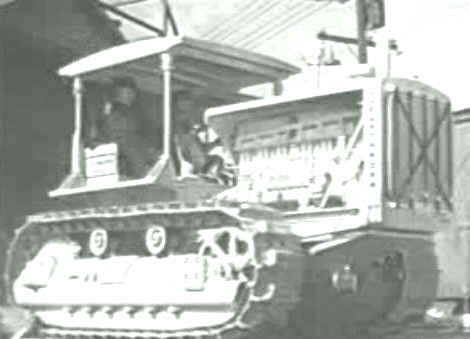
Caterpillar D8 dozers went through many changes in
the model number prefixes and suffixes throughout the
years. It is still in the line with the present machine
introduced in 2000 as the D8T clocking in at 310 horsepower.
In 1937 the R was dropped and the D8 was made with
132 horsepower.
In 1945 Caterpillar offered the D82U series and a
straight blade for the D82U machine and increased the
horsepower to 148 with a six cylinder naturally
aspirated engine. No hydraulics but the blade was
raised with a cable system run off the winch on the
back. The diesel engine was started with a V4 gasoline
pony engine which was as cantankerous to start as the
entire machine was to run on a good day.
It was a rugged machine and not an easy one to operate.
After a day's work, the operator was usually one tired
and sore puppy. The D8 featured no comforts, only brute force.
Angle blades were made for the D82U in 1946. Finally
in 1947 hydraulics to raise and lower the blade
were introduced.
In 1946, Caterpillar introduced its first pull-scrapers.
These were designed to be used with the Caterpillar D6, D7,
and D8 tractors, and the scrapers were designated the No. 60,
No. 70, and No. 80, and all were operated by cable control
units. In 1949 The No. 90 scraper was made for the D8,
which was another cable unit. The No. 80 scraper was
replaced with the No. 463 in 1956 and the No. 90 scraper
was replaced with the No. 491.
A pair of Caterpillar D8T dozers resting after a hard weeks
work preparing a gas well site.
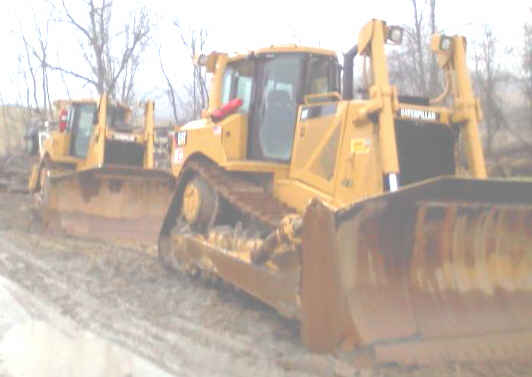
This is what it looks from inside the cab if you were the
operator running a Cat D8T pushing dirt
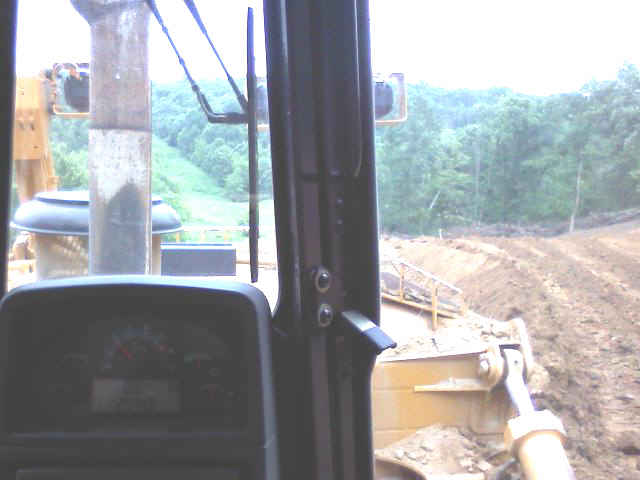
The D8 made history as the main dozer the U.S. Army
used in World War II. It was used extensively for
clearing land to build air strips and for making
roads where there were no roads and for pulling
scrapers.
After the war in 1947 hydraulics were introduced on
the 2UD8 which was a vast improvement over the
cable systems. D8's were pressed into service
in all types of industry including road building,
logging, (where they were equipped with Hyster rear
winches for skidding logs), mining, quarry work,
agricultural work, and were used extensively on
pipe line jobs where they were outfitted with side booms.
The D8 could almost "climb a wall" which made them
popular on the pipe lines for laying pipe and for
climbing steep banks to retrieve derailed rail cars
and even locomotives.
A Cat D7 and Cat D8 with Side Booms, these are owned
by R.J. Corman and used for rescuing derailed cars
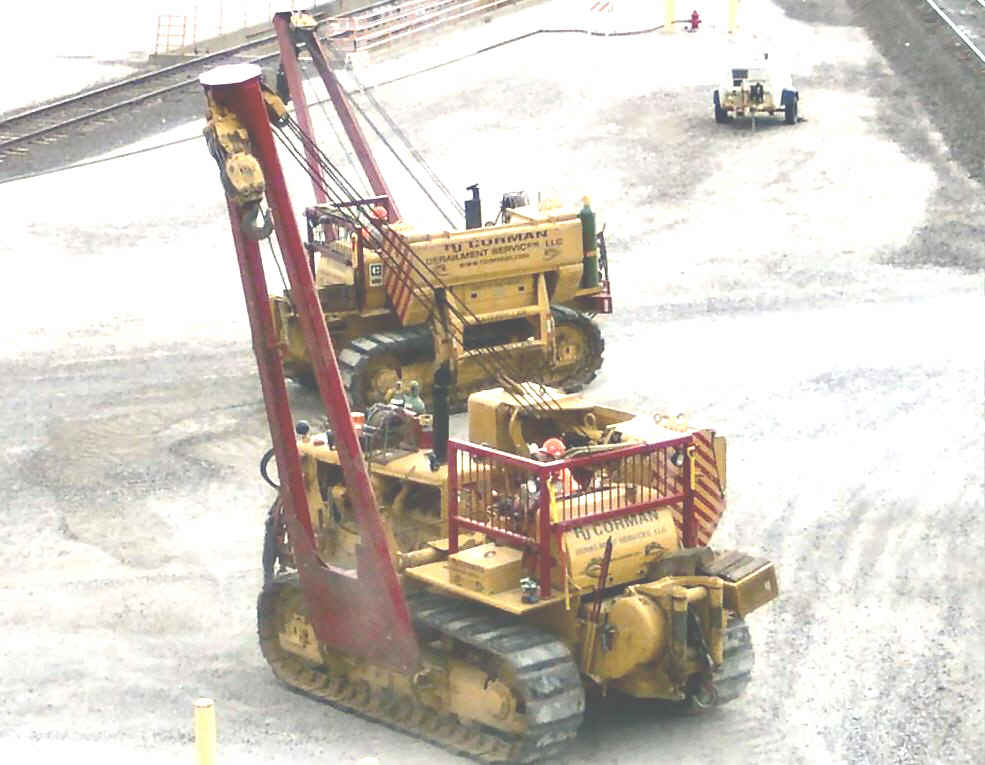
Many D8 dozers were put into use in landfills either
pushing trash for pulling heavy sheep foot compactors.
Some were used to fight forest fires, others were used
to pull scrapers.
In 1956 several Caterpillar D8G Dozers were commissioned
to take part in Operation Deep Freeze in Antarctica.
They were rugged enough to be able to stay on the
job for almost 50 years before they were finally retired
from active duty. They were mainly used for pulling
heavy cargo sleds and pushing snow.
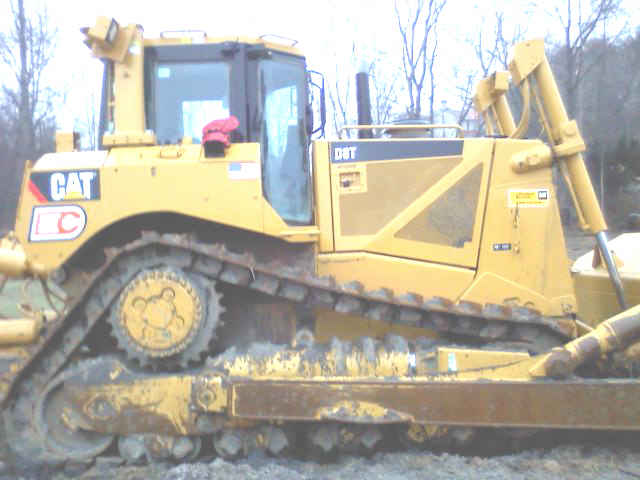
Cat D8's are manufactured at Peoria Illinois in a
massive plant which also makes the D9,
D10, and D11
bulldozers. The plant has 656 acres of ground of
which 190 acres are under roof. They have employed
at times up to 19,000 employees. In contrast,
when Caterpillar first started manufacturing dozers
under that name in 1929, the plant had 25 acres
and employed about 4,000 workers. In 1929 sales
of the crawler tractors hit $52 million.
| Model |
Year Started |
Horse Power |
| RD8 |
1935 |
132 |
| D8 |
1937 |
132 |
| D82U |
1945 |
148 |
| D8E |
1955 |
191 |
| D8D |
1955 |
191 |
| D8G |
1956 |
191 |
| D8F |
1956 |
191 |
| D8H |
1958 |
225 |
| D8H |
1965 |
270 |
| D8K |
1974 |
300 |
| * D8L |
1982 |
335 |
| **D8L SA |
1984 |
335 |
| ***D8N |
1987 |
285 |
| D8R |
1996 |
305 |
| D8R Series 2 |
2000 |
305 |
| D8T |
2004 |
310 |
| |
|
|
* The D8L was the first D8 with the elevated drive sprocket
undercarriage.
** D8L SA (special application) for farming applications
*** D8N had a differential steer transmission which
the first track-type tractor in Caterpillar history to have one.
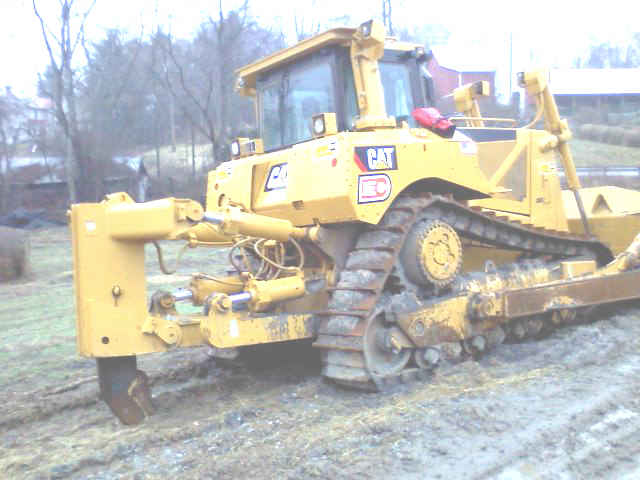
More about Dozers
and Heavy Equipment
